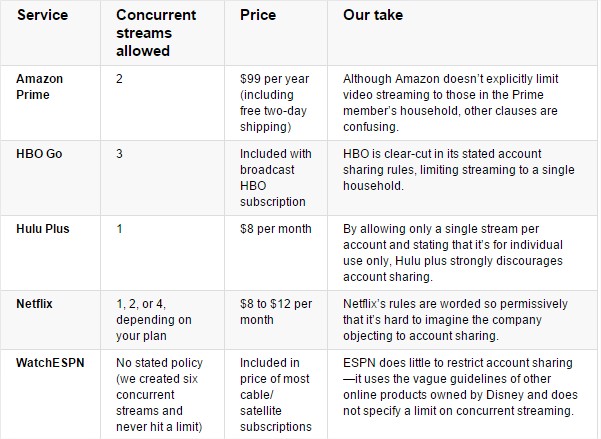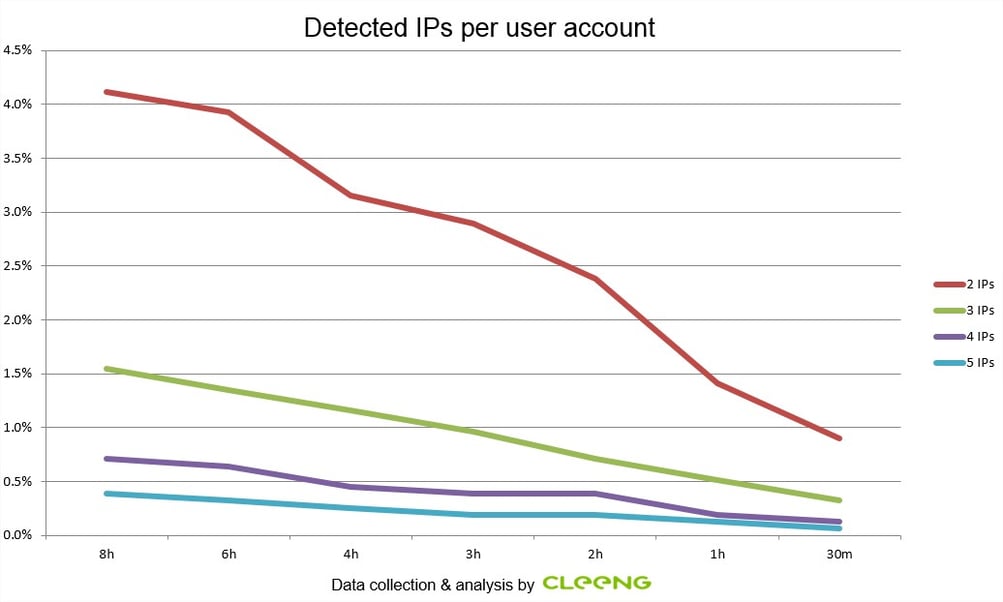Although this flexible form entertainment consumption is a wonderful thing, for publishers and broadcasters, it does come with its fair share of challenges. One of the biggest being account sharing.
To give you an idea of the issue, we have delved into some statistics and studies around account sharing and how we can tackle it…
How big is the issue of account for OTT service providers?
According to Parks Associates, account sharing is highest among younger households, where 22% of 18 - 24 year olds who enjoy OTT services use a subscription which is paid by someone outside of their home; this OTT account sharing research includes services that are independent of pay-TV services.
Parks account sharing numbers are considerably lower than those reported by Consumer Reports. In January, the company conducted a consumer survey that showed 46% of subscribers share their account password with someone outside their home - an astonishing statistic when you think about it.
We got some interesting statistics for owners of streaming media devices. According to a survey carried out by Atlanta-based video technology firm, Clearleap, 78.61% of 18 - 29 year olds shared their login details with someone else. Nearly a quarter of the young people surveyed confirmed that they have used a streaming service that does not belong to them.
Not only is this trend common among youngsters, older OTT users are at it too; many of which share their subscriptions with their family members. In fact, around 64% of current streaming service users between the age of 30 - 44 and and 68.5% of users ages 45 - 59 have shared their login with someone else.
So, as the statistics show, account sharing is incredibly popular and by all accounts it seems to be growing; if this trend increases, this could prove a major issue for all OTT providers.
What major SVOD providers do?
The below table (made by Consumer Reports) shows what the major SVOD providers do, how much they currently charge for their subscription services and most importantly, how many streams (logins) are allowed at any one time:

As you can see, this gives an excellent insight into how many of the big dogs operate and the core services they offer their members; looking at the table, it seems that Netflix is the most lenient in terms of account sharing.
How can Cleeng solve the account sharing issue?
User behavior breakdown
Here at Cleeng, we are spending a lot of time and effort in analyzing the behavior of viewers in order to find a perfect solution for our clients doing pay-per-view live streaming. And clients say that we are the only OTT Pay-per-view solution that can help tackle the issue of account sharing, which makes us proud.
After carrying out our own research, we have noticed three main types of user behavior:
- Connecting from multiple devices to watch the same content;
- Connecting from multiple devices within the same household to watch different content;
- Classic account sharing with other households.
The third variant is the one that bothers broadcasters most, and the one that every subject on the supply side wants to prevent.
To understand what we do, it’s worth understanding the risks of a default PPV system:
- One person buys the service;
- They share this service with all their friends (they no longer need to purchase the service themselves);
- The floodgates are open and the number of subscribers dwindle drastically.
While it’s important to ensure there is some form of IP recognition in place, you don’t want to penalise your customers from watching an event from anywhere else other than their registered device - as this is not only inflexible, it’s also unfair. So what do you do?
Use case: IP and geo management with Cleeng
We did some extensive tests for one client who needed accurate, objective data on how IP management can influence viewers behavior. This graph shows among our user base the behavior at a given time and how different IP setups affect number of blocked users (in percentage from total).
- If you would allow only 2 IP addresses within eight hours, you would block 4% of the users. Some of these are fraudulent; some of them have just changed device;
- If you allow 5 IP addresses within eight hours, you would block only 0.40% of the viewers.
In this specific case, allowing 5 IP addresses was the preferred solution since it decreased the number of viewers who had issue to access the content to an acceptable level, without significant negative sentiment. Having a complete freedom to manage it emerged as a valuable feature for publishers. Finding the right balance between content protection and service satisfaction is a challenge for us as service provider and the broadcaster as content provider.
Two Cleeng features that significantly ease the pain for publishers are: device/IP recognition and advanced geo targeting. By detecting and mapping advanced user behavior rules, we manage to protect video content based on IP and device recognition.
Streaming live in specific countries or geographical areas where broadcasters hold the rights is made easy with the advances geo targeting feature. Also, with accurate geo and IP data, our technology can detect and stop abuse based on the distance between IPs addresses. The result is a secure and flexible form of OTT that works wonderfully for both providers and their customers.
In summary, account sharing is becoming somewhat of a burning issue, but our technology and our crew are here to tackle it. A few challenging advancements are already on our agenda. Definitely we'll be first to inform our stakeholders when we are ready.
Broadcast your live event online with Cleeng and grab full control of your content:





